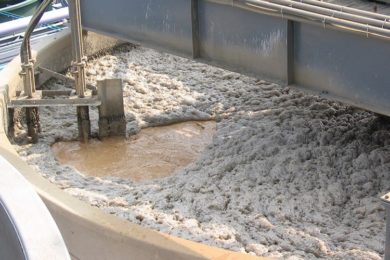Monument Mining Ltd has announced the results of a positive feasibility study (FS) on its 100%-owned Selinsing Gold Mine in Pahang State, Malaysia, including the Selinsing deposit, and the adjacent Felda and Buffalo Reef deposits. The FS establishes the economic viability of the project for a six year life of mine through the extension of the existing oxide plant to incorporate additional sulphide ore extraction.
President and CEO Cathy Zhai commented, “We are excited to see the FS coming out supporting an additional six years life of mine with economic viability, which gives a green light to fund the conversion of the Selinsing Gold Plant to treat sulphide ore. The report has also analysed opportunity to further improve production and potentially increase gold inventories in the future. While an execution plan is in place to start up construction of the Selinsing Gold plant upgrade, we continue to optimize the economic outcomes.”
The economic viability of the project described in the FS is primarily driven by adding flotation and BIOX® processes to the current Selinsing Gold Processing Plant to treat sulphide ore. The FS has focused on metallurgical testwork, metallurgical processing design and Front-End Engineering Design, along with geological review and mine planning studies. To sustain the Selinsing Gold Mine production from oxide through to sulphide ore operations, previously a NI 43-101 pre-feasibility study on the Selinsing Gold Sulphide Processing Project was filed in December 2016 (Snowden 2016 TR), supporting a bio-leaching process to economically treat sulphide materials. The FS was initiated in May 2017 to demonstrate that the BIOX ® sulphide treatment technology is the most preferred bio-leaching method to achieve best economic outcomes at the Selinsing Gold Mine. A complete NI 43-101 Technical Report titled “Selinsing Gold Sulphide Project – NI 43-101 Technical Report” (Snowden 2019 TR) was filed on SEDAR (www.sedar.com) on January 31, 2019, describing the mineral exploration, development, and production area of the Selinsing Gold Mine. It was prepared in accordance with National Instrument 43-101 Standards of Disclosure for Mineral Projects and is authored by Frank Blanchfield, BE (Min Eng), FAusIMM, Principal Mining Engineer, Snowden Mining Industry Consultants Pty Ltd (Snowden), the primary Qualified Person, and other independent Qualified Persons for geology, metallurgy and for engineering and costs.
The updated sulphide and oxide Mineral Resources and Mineral Reserves in the Snowden 2019 TR are estimated with consideration of mining and stockpile depletions to March 2018, using the resource model from the 2016 estimate as a basis, however revised reporting of the Mineral Resource has resulted in a significant increase from Snowden 2016 TR, due to changes in reporting cut-off grades for transition and sulphide Mineral Resources from 0.7 g/t Au to 0.5 g/t Au and revised pit optimisations which are used to limit the reported Mineral Resource.
A significant increase of 48,000 oz or 24% for Indicated Resources and 45,000 oz or 69% for Inferred Resource can be observed for the Selinsing deposit, in relation to the previous Snowden 2016 PFS. For the Buffalo Reef deposit, Indicated Resources have decreased 4,000 oz or 2%, and Inferred Resources increased 31,000 oz or 15%. The Mineral Reserves were updated in March 2018, and comprise 235,000 oz of gold from 3.919 Mt of ore at a diluted grade of 1.86 g of gold per tonne (g/t) from the Selinsing and Buffalo Reef/Felda deposits, along with a further 21,000 oz of gold from 1.312 Mt of ore from stockpiles at a grade of 0.51 g/t Au, plus 12,000 oz of gold from 508,000 t of ore from old tailings .
The updated Mineral Reserves are estimated using an average gold price of US$1,300 per ounce. To identify the Selinsing and Buffalo Reef Mineral Reserve, a process of optimisation using the Deswik Pseudo Flow, staged pit design, production scheduling and mine cost modelling was undertaken by Monument. Recent review of and new metallurgical testwork for processing has indicated treatment of transition and fresh ores by flotation and then bio oxidation BIOX® followed by carbon-in-leach (CIL).










